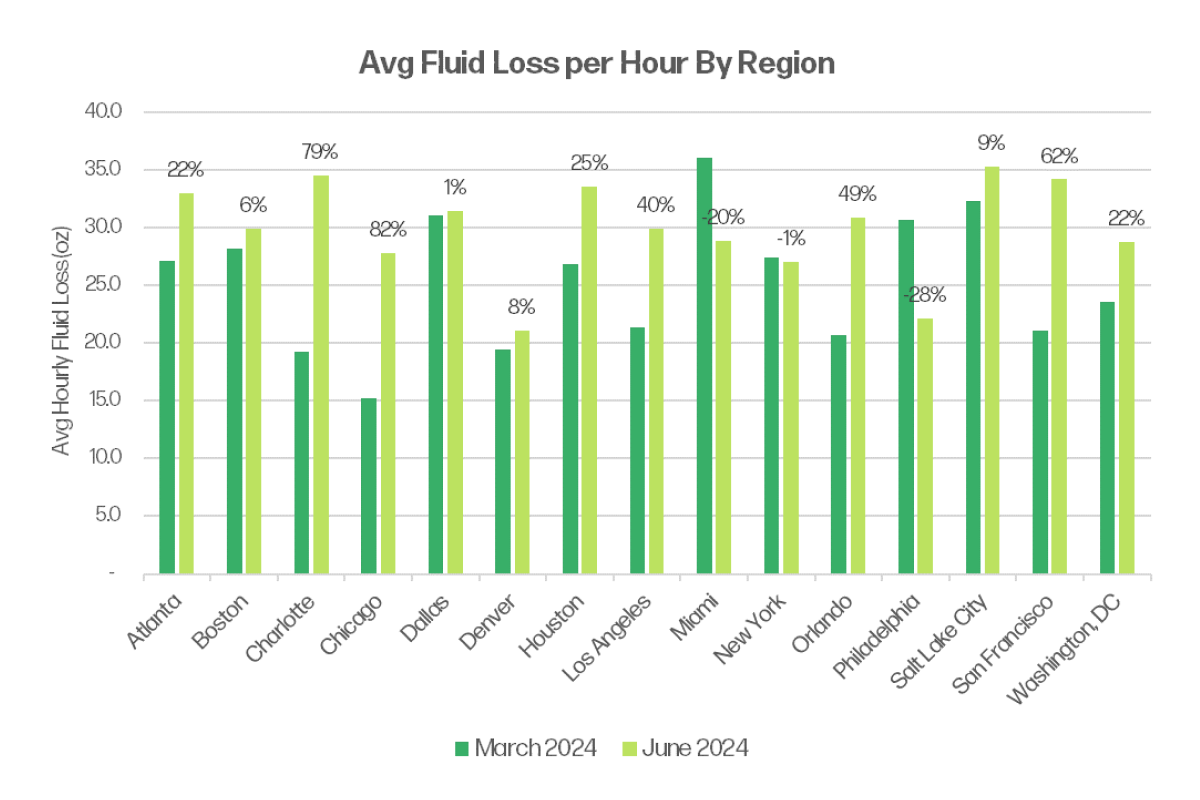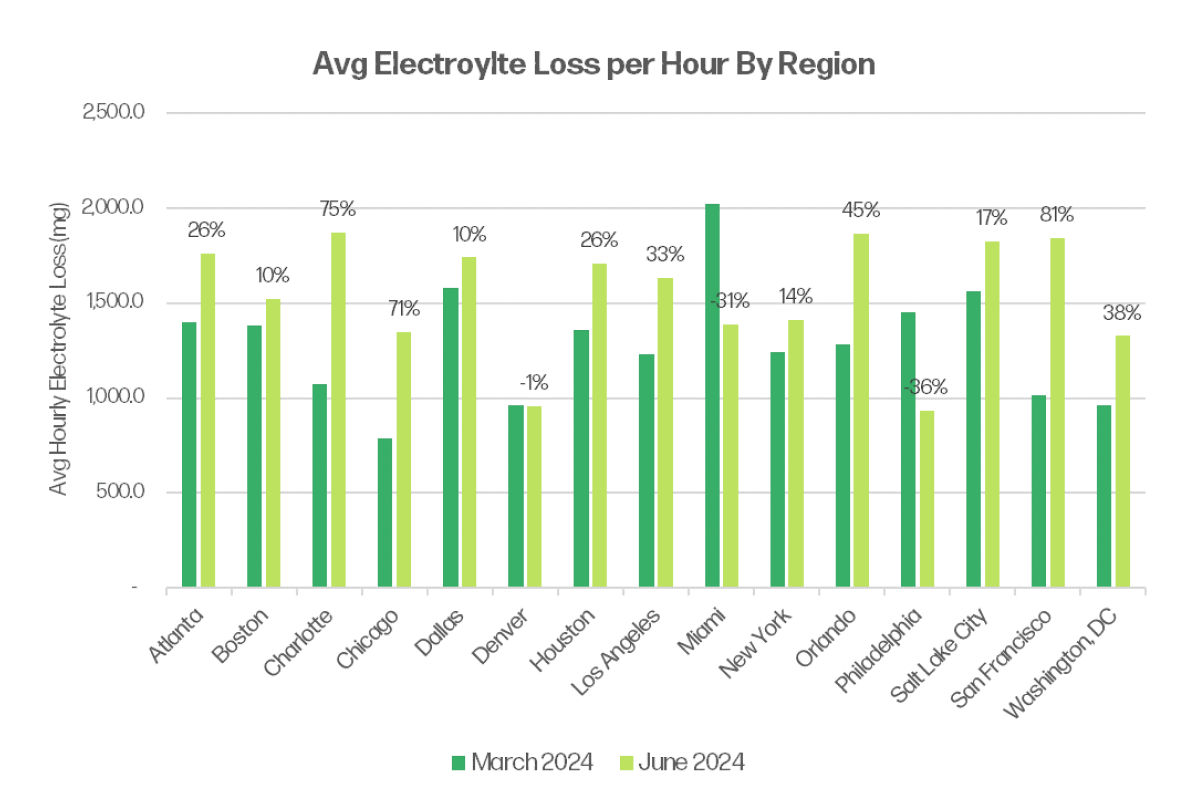Athletes from coast to coast continue to rack up the miles with their warm weather workouts. Some are utilizing their Hydration Biosensor for training, racing, or general curiosity about hydration needs.
As the seasons change, more and more individuals are taking their workouts outside to appreciate the warmer weather. With rising temperatures, the tell-tale signs of sweat loss – damp underarms, soaking shirt, and sweat dripping off your body - are much more apparent, reminding us all of the pressing realities of hydration and the importance of watching out for heat related illness.
Heat Training
Two critical ways for endurance athletes to mitigate their risk of exertional heat illness include Heat Acclimatization and Hydration. The Training in the Heat article covers both of these topics more in depth. In short, athletes should increase their workload gradually over 1-2 weeks to help their bodies improve it's heat tolerance and efficiency of thermoregulatory response.
Sweat is Personal
Sweat rates can vary from person to person, workout by workout, and day to day. Additionally, the environment plays a significant role in the way we sweat as well. With the data collected in the Nix Solo app, we looked at sweat rates from March workouts and contrasted them to the sweat rates found in workouts logged in June. The sweat and electrolyte losses from the winter doldrums to the early heatwaves are eye opening. See how your region stacks up below.


Highlights by region:
⬢ Chicago - Fluid loss rates increased by 82%
⬢ Charlotte - Average sweat rates increased by 15.3 oz (almost a full pound)
⬢ Miami - Fluid losses decreased by 20% most likely caused by workouts being completed in the early morning hours vs midday or afternoon
⬢ San Francisco - Hourly electrolyte loss rates increased by 81%
⬢ Houston - Hourly fluid and electrolyte needs increased by 25% and 26% respectively
As a reminder, it's important to stay safe as temperature rise. Fatigue and physiological strain appear at dehydration levels as low as 2% of your body mass. Further dehydration can have dangerous effects on your health and performance. Make sure that you’ve been educated about your personal fluid and electrolyte needs.





